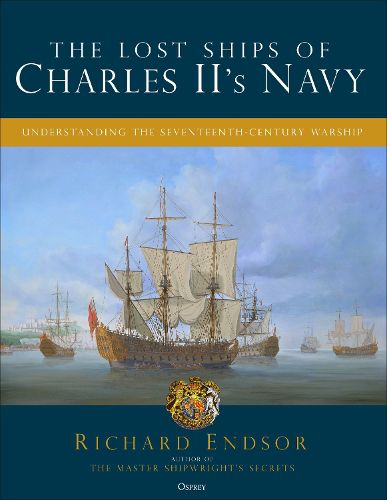Readings Newsletter
Become a Readings Member to make your shopping experience even easier.
Sign in or sign up for free!
You’re not far away from qualifying for FREE standard shipping within Australia
You’ve qualified for FREE standard shipping within Australia
The cart is loading…






A comprehensively researched and beautifully illustrated history of the design of the ships of Charles II Navy, using carefully reconstructed architectural plans based on contemporary records.
The Royal Navy of the late 17th century was the greatest enterprise in the country, dwarfing civilian concerns. And in 1777, with Samuel Pepys as Secretary of the Navy, the House of Commons voted to fund the building of 30 new ships, the largest single shipbuilding project up to this point. This new history by award-winning naval historian Richard Endsor describes the history of this great endeavour, and seeks to recreate architectural plans of these ships based on detailed measurements and calculations left behind by Edmund Drummer, an assistant to master shipwright Sir Anthony Deane and later Surveyor of the Navy from 1692 to 1699.
Drummer was commissioned to survey the 30 new ships, and travelled round the country visiting the ships and recording detailed preparatory notes for producing architectural plans in a notebook that contains numerous lists of measurements, calculations and hull section drawings taken from six ships just before they were launched in 1679. Drummer was caught up in the intrigue surrounding the Popish Plot and Exclusion Crisis of 1679, which saw both Pepys and Deane imprisoned, and his work was never finished.
Based on 25 years of research, The Lost Ships of Samuel Pepys's Navy finishes the work started by Edmund Dummer in 1679. Using Drummer's surviving notebook, supported by the official specification dimension list for the ships, large-scale, artistic drawings and several surviving models, Richard Endsor has created dimensioned and accurate architectural plans for several named ships belonging to the Navy of King Charles II. The book will not only contain these drawings of the ships but numerous other illustrations, including contemporary Van de Velde drawings of the ships.
$9.00 standard shipping within Australia
FREE standard shipping within Australia for orders over $100.00
Express & International shipping calculated at checkout
A comprehensively researched and beautifully illustrated history of the design of the ships of Charles II Navy, using carefully reconstructed architectural plans based on contemporary records.
The Royal Navy of the late 17th century was the greatest enterprise in the country, dwarfing civilian concerns. And in 1777, with Samuel Pepys as Secretary of the Navy, the House of Commons voted to fund the building of 30 new ships, the largest single shipbuilding project up to this point. This new history by award-winning naval historian Richard Endsor describes the history of this great endeavour, and seeks to recreate architectural plans of these ships based on detailed measurements and calculations left behind by Edmund Drummer, an assistant to master shipwright Sir Anthony Deane and later Surveyor of the Navy from 1692 to 1699.
Drummer was commissioned to survey the 30 new ships, and travelled round the country visiting the ships and recording detailed preparatory notes for producing architectural plans in a notebook that contains numerous lists of measurements, calculations and hull section drawings taken from six ships just before they were launched in 1679. Drummer was caught up in the intrigue surrounding the Popish Plot and Exclusion Crisis of 1679, which saw both Pepys and Deane imprisoned, and his work was never finished.
Based on 25 years of research, The Lost Ships of Samuel Pepys's Navy finishes the work started by Edmund Dummer in 1679. Using Drummer's surviving notebook, supported by the official specification dimension list for the ships, large-scale, artistic drawings and several surviving models, Richard Endsor has created dimensioned and accurate architectural plans for several named ships belonging to the Navy of King Charles II. The book will not only contain these drawings of the ships but numerous other illustrations, including contemporary Van de Velde drawings of the ships.